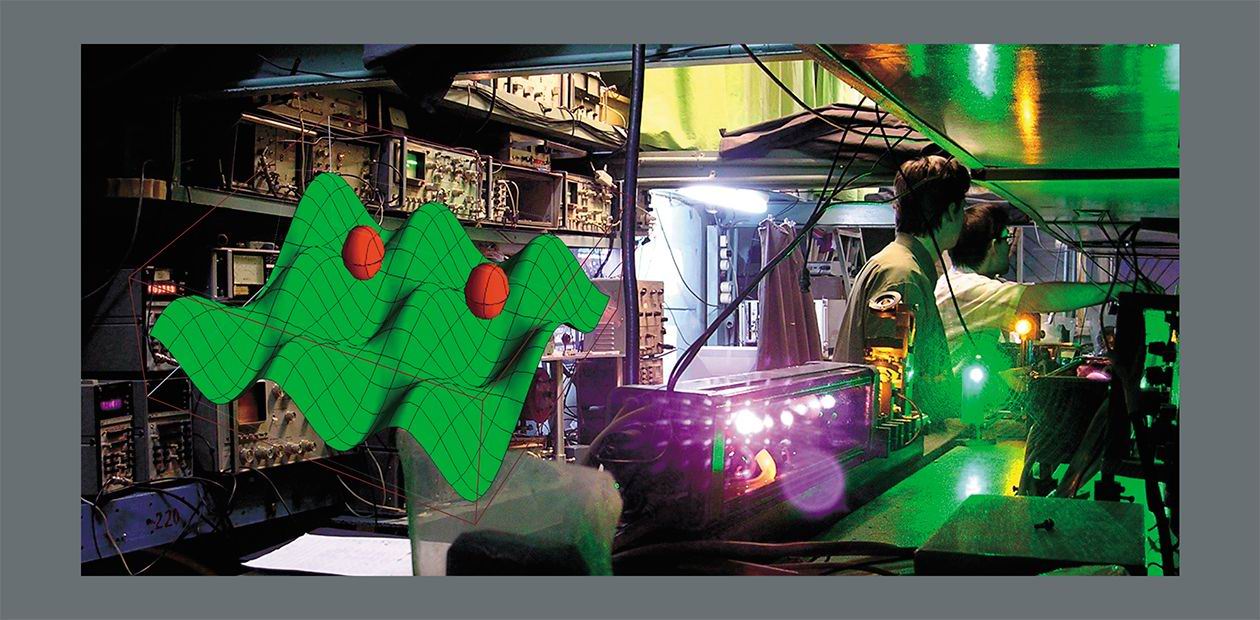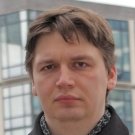Rydberg Atoms for a Quantum Computer
Experimental investigations of atoms in highly excited states are performed at the Institute of Semiconductor Physics SB RAS. It is expected that these atoms can be used as fast logic gates to a quantum computer
The origins of quantum information theory are associated with Russian mathematician Yury Manin and American physicist Richard Feynman, who, more than thirty years ago, suggested using quantum systems (groups of microparticles with a discrete set of states) to calculate molecular dynamics and quantum effects.
As a basic example of a quantum computer, let us consider a system, which consists of a number of quantum objects. Each of them can be found only in two states, which are associated with the logical values “true” and “false.” These quantum objects are termed quantum bits or qubits, and the whole quantum system is termed a quantum register. A classical bit has to be either in the “true” state or in the “false” state at each particular moment in time, whereas a quantum bit can be in a superposition of both states at the same time. Hence, we can only speak about a probability to find a qubit in each of the two states.
If qubits are interacting with each other, their quantum states are entangled; therefore, measuring the quantum state of one of the qubits will instantly change the quantum state of the other qubits. The consequent features of quantum computing (for example, quantum parallelism) lead to great advantages of the quantum computer in solving certain mathematical problems, which are considered incomputable on classical computers. This includes factorization of very large numbers, which is used in modern cryptography, and search in very large unsorted databases.
The simplest quantum computations were demonstrated on organic molecules using nuclear magnetic resonances in liquids. On the other hand, a solid-state quantum computer seems to be more natural and easier for implementation. Today, the most advantageous results in implementing simple quantum algorithms are obtained with single ions in electrostatic ion traps. However, it is difficult to construct a large quantum register using this method, since the charged ions always strongly interact with each other and with the neighborhood. That leads to strong decoherence, which means destruction of the quantum state of the register.
Single neutral atoms can be more promising as qubits of a quantum computer. A pair of long-lived hyperfine sublevels of the ground state of an atom can be considered as the two states of a qubit, which are appropriate for storing information for a long period. The quantum state of a qubit can be controlled by sequences of laser pulses; and the quantum register of arbitrary size can be constructed from the neutal atoms, trapped in the optical lattice created by laser radiation. The greatest advantage of neutral atoms is the possibility to control their interaction via laser excitation of highly-excited energy levels. Highly-excited, or Rydberg, atoms have numerous unique properties, including large lifetimes and the ability to interact at large distances. Their interaction can be switched on and off by laser excitation and de-excitation of atoms.
Recently, success in implementating quantum logical operations with single atoms was reported by a group of researchers from Wisconsin-Madison University, USA. They have demonstrated controllable inversion of the quantum state of an atom, which corresponds to the “Controlled logical NOT” operation, the most important operation for a universal quantum computer. The sequence of the laser pulses required to perform this operation lasted 7 microseconds. However, the full experimental cycle, including preparation of the qubits and detection of the final quantum states, lasted about a second. So, a classical computer remains faster yet.
In Russia, implementation of quantum computing based on neutral atoms is studied by researchers at the Institute of Semiconductor Physics SB RAS. They are performing experiments with ultracold rubidium atoms, which are excited into Rydberg states by pulsed lasers with large repetition frequency. One of the most important achievements of the laboratory is observation of the electrically-controlled resonant dipole interaction of cold Rydberg atoms. An original method of rapid determinating of the number of atoms excited by each laser pulse was also developed here. The method will help to observe the effect of dipole blockade: in an ensemble of strongly interacting atoms only one of them can be excited into the Rydberg state by laser radiation. This effect can be used for developing fast quantum logic gates; consequently, detailed investigation of dipole blockade is being planned.
The next step will be implementing the two-qubit quantum phase gate in spatially separated optical dipole traps. Inversion of the phase of the composite wavefunction is expected to occur, which is required for a “Controlled logical Not” quantum gate.
Quantum computing is one of the most challenging tasks for scientists all over the world. Solving this problem will lead to significant progress not only in physics, mathematics, an information technology, but in academic research overall.
References
Jaksh D., Cirac J. I., Zoller P., Rolston S. L. et al. Quantum Gates for Neutral Atoms // Phys. Rev. Lett. 2000. V. 85. P. 2208. Manin Yu. I. Computable and Incomputable (In Russian). M.: Soviet Radio, USSR, 1980.
Ryabtsev I. I., Tretyakov D. B., Beterov I. I., Entin V. M. Observation of the Stark-tuned Forster resonance between two Rydberg atoms // Phys. Rev. Lett. 2010. V. 104. P. 073003. Valiev K. A. Quantum computers and quantum computations // PHYS-USP, 2005. 48 (1). P. 1—36.






